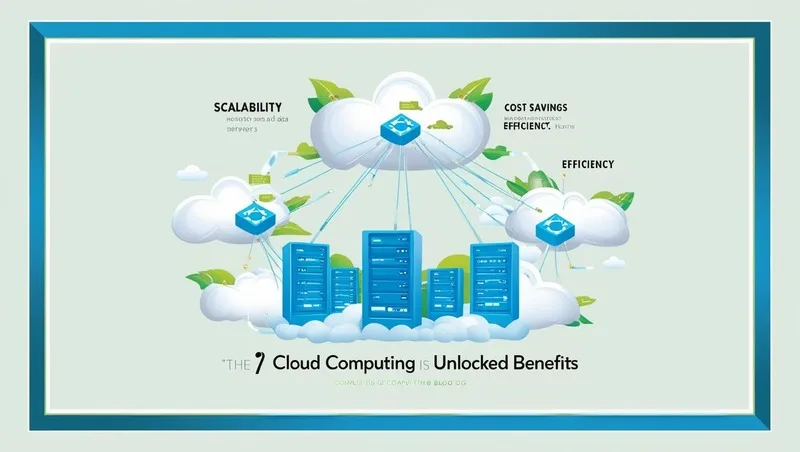Cloud computing essentials unlock benefits that go far beyond cost savings—they empower agility, resilience, and innovation. Utilizing cloud-based technologies enables companies to access flexible tools, computing capabilities, and contemporary cloud services, allowing them to store, manage, and collaborate on data over the internet.
Whether using Software as a Service (SaaS) platforms like Google Docs, Infrastructure as a Service (IaaS) solutions, or Platforms as a Service (PaaS) environments, companies already benefit from streamlined operations. Small businesses, in particular, thrive under pay-as-you-go pricing, which eases budget concerns and fosters growth.
With reliable broadband and mobile access, data centers and physical servers become relics of the past. According to expert research, adopting public and private clouds (or hybrid models) boosts security, efficiency, and real-time collaboration.

How Cloud Computing Boosts Productivity
Migrating daily tasks to cloud environments streamlines workflows. Teams collaborate faster using real-time editing in shared documents (e.g., SaaS tools like Slack) and eliminate hardware limitations. Remote computing resources managed by specialists ensure seamless upgrades and maintenance.
Cloud computing offers flexibility that drives higher output. Remote backups in data centers prevent data disasters, while advanced security tools like encryption safeguard productivity.
We see higher output when you access files anywhere an internet connection is available, including smartphones and tablets. Many teams rely on remote backups to avoid data disasters that derail projects for days. You can learn more about advanced data handling strategies in our cloud computing essentials resource.
PS: Storage and collaboration processes run smoother once you shift tasks into the cloud.
Key Benefits of Scalability for Growth
Scalability helps businesses adapt to market shifts without hefty upfront investments. Pay-per-use models (projected to dominate 58% of contracts by 2026) reduce infrastructure waste.
Retailers, for example, scale cloud services during events like Black Friday to handle traffic spikes. Public clouds like Amazon Web Services (AWS) enable resource expansion with a click, minimizing downtime and disaster recovery costs. Private clouds offer exclusivity for compliance-driven industries, while hybrid setups balance performance and cost-effective growth.
Reducing Costs with Smart Cloud Solutions
Ditch physical servers and slash overhead with pay-as-you-go plans. According to a 2024 report by TechWatch, organizations that shift to cloud services cut infrastructure costs by 30 percent.
Cost savings extend to eliminating hidden maintenance fees and outsourcing upgrades to providers. IaaS and PaaS models further reduce expenses by outsourcing server management and software hosting.
Strengthening Security Through Modern Tools
Cloud computing doesn’t compromise safety. Advanced encryption, multi-factor authentication, and automated backups in data centers reduce security incidents by 94%. Public and private clouds offer tailored safeguards—monitor threats in real-time and scale defenses without investing in physical servers. Compliance-ready cloud environments adapt to evolving regulations, keeping operations secure and uninterrupted.
Enhancing Collaboration Across Team Locations
Replace chaotic email chains with cloud-based workspaces. Real-time edits, annotations, and group chats (via SaaS tools like Microsoft Teams) ensure version control and transparency. Remote teams stay connected even during disruptions, accessing files beyond 50 MB effortlessly. Centralized hubs reduce risky “shadow IT” and preserve data integrity—critical for scaling businesses.
Simplifying Data Storage and Accessibility
Eliminate the need for bulky hardware when you move your files to a shared server. Streaming videos or running applications becomes simpler because the core technology handles tasks remotely. We help you store and retrieve files at scale, which lets you respond to demand faster.
You can also set up a simple website or launch a virtual machine in minutes. Once you learn basic networking, you reduce confusion and gain confidence for future integrations. Studies indicate that consistent practice leads to stronger skills in handling cloud environments with ease.
Choosing the Right Provider for Your Needs
Your focus starts with identifying your operational goals, security preferences, and growth plans for the near future. We evaluate 3 types of cloud computing models: public, private, or hybrid. Public options, like AWS or Azure, reduce your infrastructure tasks and free you from on-site hardware maintenance.
Compare SaaS, PaaS, and IaaS offerings, projected workloads, and budgets. The right partner ensures cost-effective scaling, automatic updates, and real-time adaptability—key for startups and enterprises alike.
That approach helps you pick a provider that meets your demands and keeps future expansion in check.
Cloud computing boosts agility, cuts infrastructure costs, and fosters better collaboration. Flexible hosting plans let teams focus on new projects instead of fretting over servers. Performance upgrades and updates arrive quickly, allowing smooth growth.
Automatic backups reduce downtime, and data encryption bolsters safety. Many startups and established shops see better efficiency through these steps. A local bakery can process orders from anywhere, even while the owner checks flour inventory on a phone.
That convenience helps any business aim higher. It’s a trustworthy road forward. Costs stay low while productivity rises.
Conclusion
Cloud computing essentials unlock agility, slash infrastructure costs, and foster innovation. From real-time collaboration to cost savings, businesses thrive in cloud environments. Whether using public clouds like AWS or tailored private clouds, the advantages are clear: automatic backups, robust security, and seamless scalability.